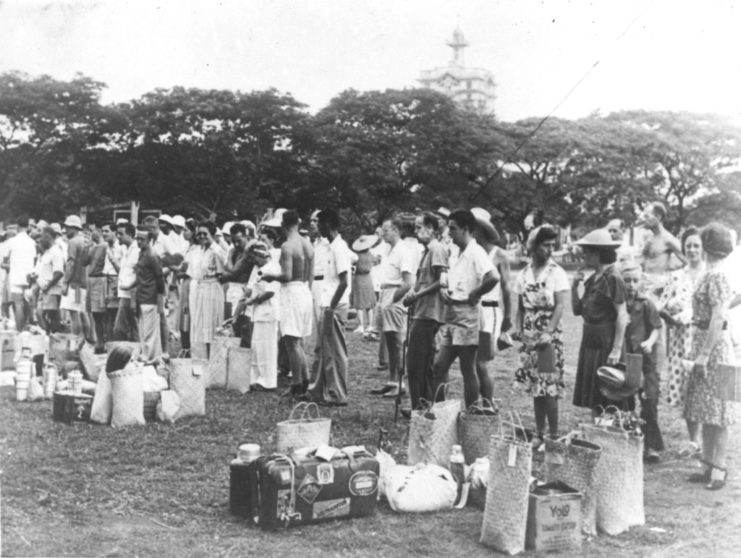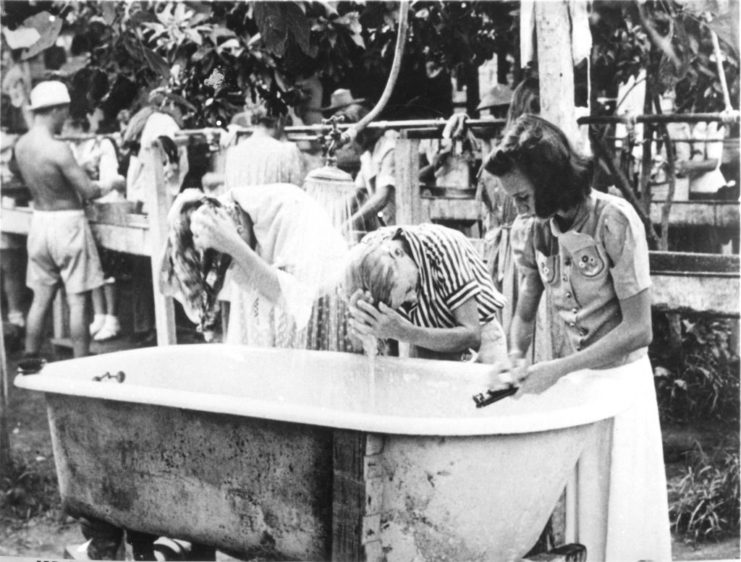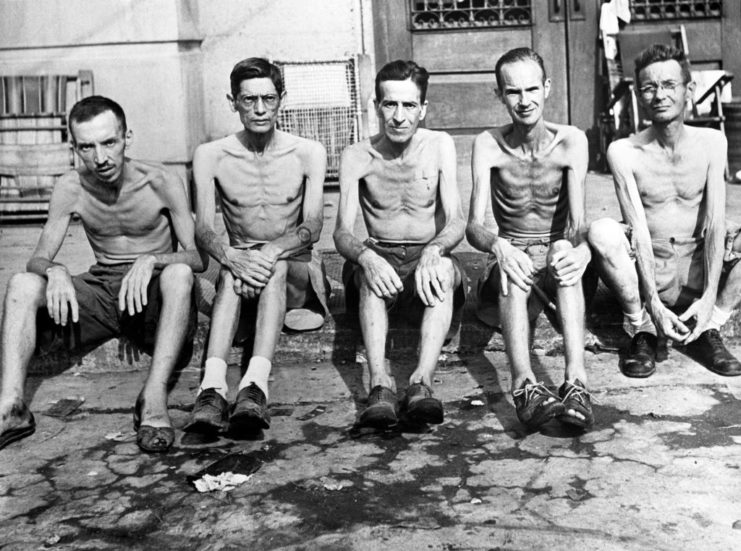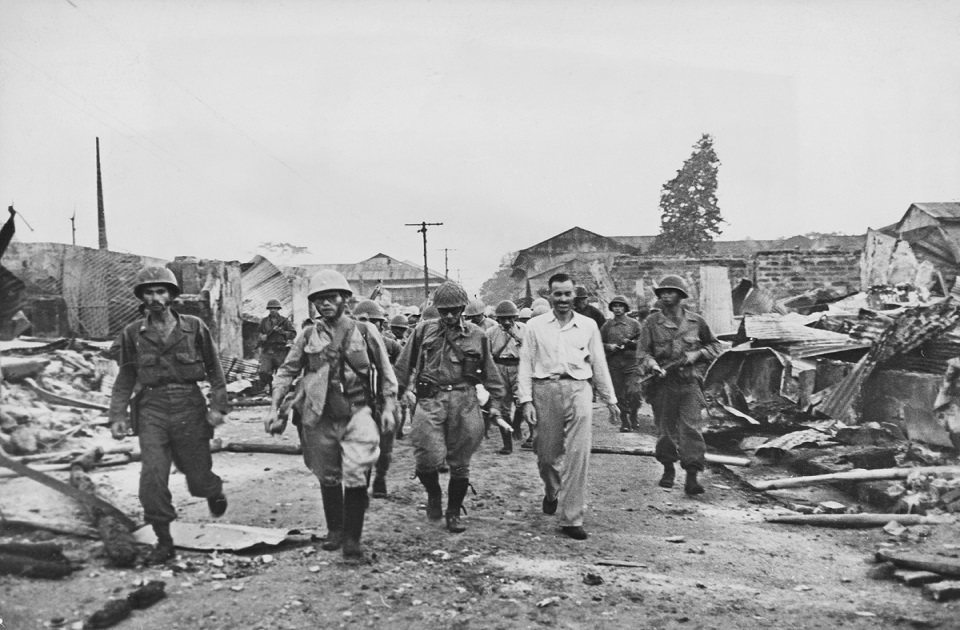During World War II, the United States forced 120,000 Japanese Americans into internment camps. The action represented one of the darker moments in American history. At the same time, the Japanese were taking similar action in the Philippines. This is the story of Japanese-run internment camps during the Second World War.
The Japanese take over the Philippines

At the outset of World War II, the Philippines was a commonwealth of the United States. On the same day the Japanese attacked Pearl Harbor, they also began an operation in Luzon. Within three weeks, the Japanese Army had taken over the Philippines, and the 20,000 American and 80,000 Filippino troops on the ground departed to the Bataan Peninsula. Any remaining American or British citizens were ordered to stay in their homes until they could be registered.
Internment begins
After being rounded up in Manila, they were transferred to the University of Santo Tomas, along with around 70 African-Americans and Filipino spouses or internees. There didn’t seem to be much of a plan, and the internees mainly were left to fend for themselves. The only exceptions were a 7:30 PM roll call each night and the use of room monitors. The background of the captives varied wildly, from business executives and retired soldiers to prostitutes. Some came with pockets full of cash, others were entirely broke.
The Japanese did little to provide food or services, so the captives were forced to set up their own society. A man named Earl Carroll oversaw an executive committee at the Santo Tamos internment camp, which made decisions for the camp. Ernest Stanley, a missionary who’d lived in Japan, acted as an interpreter. The captives developed a police force and a hospital that had several actual nurses and doctors. There was also a kitchen set up to provide morning and night meals for detainees who couldn’t afford food from the outside.
Issues with the camps

Despite the captives’ best attempts to set up services within Santo Tomas, there were some significant issues. The biggest problem was sanitation. 1,200 men lived in the camp, and they had to share 13 toilets and 12 showers. Shelter during the heat of the day could also be hard to find. Again, the wealthier captives were in luck, as they were able to build shanties out of bamboo and palm fronds.
The executive committee attempted to fix some of the sanitation issues by creating a health committee. The health committee, made up of 600 interned men, was tasked with building toilets and showers, disposing of the camp’s garbage, and controlling the flies, mosquitoes, and rats. For the first two years, the sanitation practices were successful and there were no significant disease outbreaks.
Things got much worse as the war went on
As the war turned for the Americans, things got worse at the camps. Due to overcrowding, 800 men were transferred to a center called Los Banos. Eventually, the Los Banos campus, 37 miles away from Santo Tomas, grew to hold over 2,000 captives, who were rescued in a raid conducted by American soldiers and Filippino guerrillas in February 1945.
At Santo Tomas, supplies like food and soap began to run short. While there was a fund for destitute detainees, funds were running out. Things got worse in November 1943, when a typhoon destroyed many of the camp’s food and supplies. A month later, the Red Cross delivered a 48-pound box of food and supplies for each internee. This would be the first and last rescue package from the organization.
In February 1944, the Japanese Army took over command of the camp from the civilian executive board. Captives could no longer buy supplies or food from outside sources. Food was now rationed, and many internees became profoundly malnourished. Diseases that had thus far been avoided began to run rampant, and death became a regular occurrence.
The captives are freed

After the Allied forces fought the Battle of Leyte in October of 1944, rumors began to swirl that they would soon be coming to liberate Santo Tomas. The American troops were making haste, as they thought the detainees might be killed. The Japanese soldiers in charge of the camp took 200 hostages before the arrival of the American troops. When the Americas reached the bases, negotiations were made and the prisoners were freed.
The total number of prisoners liberated was 3,785 – 2,870 of which were American. They could not leave the Philippines immediately, as fighting was still rampant. As such, evacuations began slowly. Some chose not to return to America, hoping to return to their pre-war lives in the country. The majority received a combat ribbon for “contributing materially to the success of the Philippine campaign.” Earl Carroll was honored with the Medal of Freedom.
